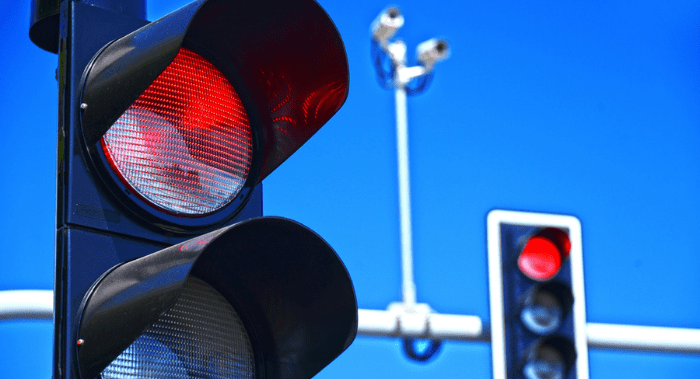Complete the form to schedule a free consultation with a traffic lawyer
Are Red Light Cameras Effective?

In recent decades, red light cameras have become ubiquitous at intersections across the United States with the intention of preventing drivers from committing one of the most common traffic infractions: running a red light. The cameras work by taking a photograph or video of a vehicle that enters an intersection after the traffic light has turned red, and the owner of the vehicle is then sent a citation. In this article, we will explore the effectiveness of red light cameras, their impact on road safety, and the way they have changed traffic law in the United States.
Improving Road Safety
One of the primary arguments in favor of red light cameras is that they reduce the number of accidents caused by drivers running red lights. According to the Insurance Institute for Highway Safety (IIHS), red light cameras have been shown to reduce the number of fatal crashes caused by red light violations by 21%. The IIHS also found that the presence of red light cameras reduced the number of all types of crashes at intersections by 14%. These statistics suggest that red light cameras can have a positive impact on road safety by encouraging drivers to stop at red lights and reducing the risk of accidents at intersections.
Application Across the Country
In addition to improving road safety, red light cameras have also changed traffic laws in the United States. As of 2021, 23 states and the District of Columbia have laws that permit the use of red light cameras, while 27 states have banned them or do not have laws allowing their use. The specific restrictions and regulations for red light cameras vary by state, but they generally require that warning signs be posted at intersections where cameras are present and that the owner of the vehicle be given notice and an opportunity to contest the citation.
States Where Red Light Cameras are Permitted
- Alabama
- Arizona
- California
- Colorado
- Delaware
- District of Columbia
- Florida
- Georgia
- Hawaii
- Illinois
- Iowa
- Louisiana
- Maryland
- Missouri
- Nevada
- New Mexico
- New York
- North Carolina
- Ohio
- Oregon
- Pennsylvania
- Rhode Island
- Tennessee
- Virginia
- Washington
States Where Red Light Cameras are Prohibited
- Alaska
- Arkansas
- Connecticut
- Idaho
- Indiana
- Kansas
- Kentucky
- Maine
- Massachusetts
- Michigan
- Minnesota
- Mississippi
- Montana
- Nebraska
- New Hampshire
- New Jersey
- North Dakota
- Oklahoma
- South Carolina
- South Dakota
- Texas
- Utah
- Vermont
- West Virginia
- Wisconsin
- Wyoming
Privacy Concerns and False Citations
Critics of red light cameras argue that they are an invasion of privacy and that they are primarily used to generate revenue rather than improve road safety. There have also been concerns about the accuracy of the cameras and the potential for errors or false citations. Additionally, some drivers have reported feeling pressured to slam on their brakes at yellow lights in order to avoid triggering the cameras and receiving a citation, which can lead to rear-end collisions. There have also been reports of false citations after drivers made a legal right turn at a red light camera.
Despite these criticisms, many cities and states continue to use red light cameras as a tool for improving road safety. The effectiveness of the cameras may vary depending on factors such as the design of the intersection and the behavior of drivers in the area. However, the overall data suggests that red light cameras can be an effective way to reduce the number of accidents caused by red light violations and improve road safety at intersections.
Criticism and Controversy
In addition to their impact on road safety, red light cameras have also generated controversy over the years due to concerns about their impact on traffic law and due process. Some critics argue that red light cameras violate drivers’ constitutional rights by allowing citations to be issued without a police officer present and without the opportunity for a trial by jury. However, the Supreme Court has generally upheld the use of red light cameras as a legitimate way for states to enforce traffic laws and improve road safety.
The Verdict
Red light cameras have become a common sight on roads across the United States, and they are intended to improve road safety by deterring drivers from running red lights. Despite concerns about their impact on privacy and due process, red light cameras have been shown to be effective in reducing the number of accidents caused by red light violations. They have also changed traffic law in the United States by providing a new way to enforce traffic laws and generate revenue for cities and states. While there are still debates about the use of red light cameras, it is clear that they have become an important tool in the effort to improve road safety at intersections.
If you have received a traffic ticket for distracted driving or any other offense, then use TicketVoid.com’s free attorney matching service to get in touch with a lawyer who may be able to represent you in court and protect you from penalties such as hefty fines and jail time.
